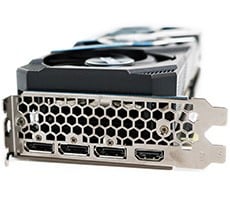ATi Radeon X850 XT Platinum Edition
|
| Thanks to the dedication of millions of gamers and a huge mod-community, the original Half-Life became one of the most successful first person shooters of all time. So when Valve announced Half-Life 2 was close to completion in mid 2003, gamers the world over began chomping at the bit. Unfortunately, thanks to a compromised internal network; the theft of a portion of the game's source code; a couple of missed deadlines; and a tumultuous relationship with the game's distributor, Vivendi Universal, we all had to wait until November 2004 to get our hands on this gem. We benchmarked Half-Life 2 with a long, custom- recorded timedemo that takes us along a cliff and through a few dilapidated shacks, battling the enemy throughout. These tests were run at resolutions of 1,024 x 768 and 1,600 x 1,200 without any AA or aniso and with 4X antialiasing and 8X anisotropic filtering enabled concurrently. |


Although the hype leading up to Half-Life 2's release may have led you to believe ATi's high-end Radeons were going to crush NVIDIA's GeForce 6800 series, that hasn't turned out to be the case. The X850 XT Platinum Edition was the fastest card of the bunch, at both resolutions and in both test configurations, but its margins of victory weren't huge. At 1,024 x768 with AA and aniso enabled, the X850 XT Platinum Edition was about 7.1% faster than the GeForce 6800 Ultra. And in the same configuration at 1,600 x 1,200, the new Radeon was about 11% faster. What's more interesting to note is how little performance is lost by enabling antialiasing and anisotropic filtering through Half-Life 2's in-game control panel. Even with some of the most advanced graphics in any PC game to date, enabling AA and aniso doesn't cripple any of the cards we tested.







